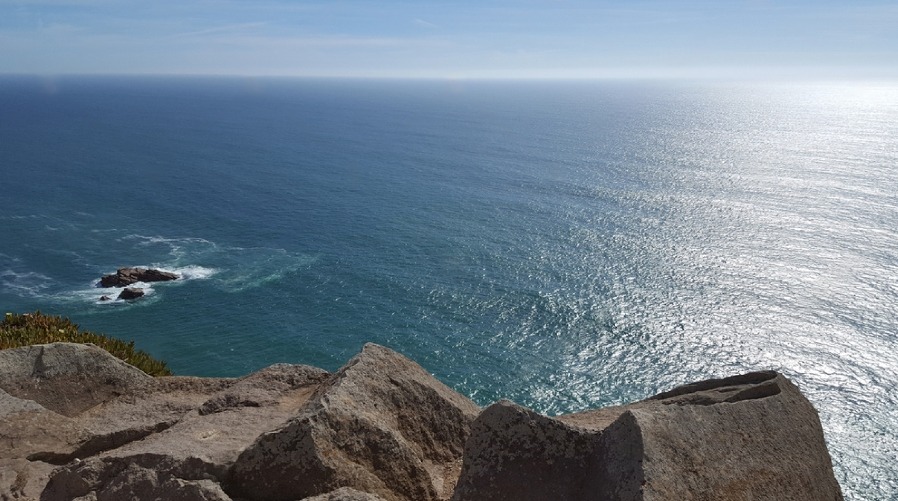Our planet is covered with a 70% mysterious ocean that is both a beautiful sight and a perilous playground. The Earth’s oceans are full of wonders, but some of them can be pretty scary. We’re talking about the five most dangerous waters in the world. These waters include the Arctic Ocean, the Antarctic Ocean, the Indian Ocean, the Pacific Ocean, and the Atlantic Ocean.
These places are known for being really tough to navigate. They’re super cold, and the weather can be crazy. There are strong currents that can pull ships around, and even the animals in these waters can be pretty intimidating.
A natural and manmade threat turns these colossal aquatic realms into heart-pounding danger zones. But despite all the risks many brave explorers and curious scientists can’t resist the challenge.
According to recent research, our existence on Earth would not be possible without the Southern Ocean. Protecting Antarctica and the Southern Ocean is imperative for humanity’s future on this planet.
Contents
Antarctic Southern Ocean

The Southern (Antarctic) Ocean is now recognized as the fifth ocean by most countries, including the United States. This ocean surrounds Antarctica in the Southern Hemisphere.
It extends from the coast of Antarctica to the 60th parallel south latitude which covers an area of 20 million square kilometers. Its remote location makes it one of the least explored and least understood oceans on our planet.
Climate and Weather
The climate in the Antarctic Ocean is one of the harshest in the world, characterized by frigid temperatures and powerful winds. The sea ice surrounding Antarctica expands nearly doubling the continent’s size during winter.
Summers bring milder temperatures which allows the tourists and researchers to explore the region.
Unique Ecosystem
The Antarctic Ocean hides an astonishing ecosystem beneath the icy surface. Phytoplankton, the foundation of the Antarctic food web, thrives in the nutrient-rich waters. A variety of sea life thrives in the region, including the Krill (a small shrimp-like creature) and Antarctic toothfish.
Wildlife in the Antarctic Ocean
The waters surrounding Antarctica are a haven for marine life. Penguins, seals, and whales, including the famous humpback and orca, call this frigid ocean home. The biodiversity and adaptability of the animals in the Antarctic Ocean are nothing short of remarkable.
The Pacific Ocean

The Pacific Ocean is the largest and deepest ocean on Earth, and it harbors some of the most dangerous waters in the world. Its enormity and diverse ecosystems create a host of threats, from nature’s fury to human-made disasters.
The Ocean is known for its meteorological extremes, like the epic typhoons and hurricanes that ravage whole regions. They start as a watery whisper in the Pacific and then turn into roaring monsters. It has the potential to cause chaos with its savage winds and torrential downpours.
The Garbage Patch of Doom
The Great Pacific Garbage Patch is a colossal junkyard of plastic and debris which is a looming threat to marine life and the ocean’s well-being. It’s like an enormous floating trash island, double the size of Texas, and serves as a stark reminder of the mess we’ve made.
There is also a horseshoe-shaped zone in the Pacific Ocean known as the Ring of Fire. It is responsible for 90% of all earthquakes in the world and 75% of all volcanic eruptions. Living around here is like sleeping next to a ticking volcano.
The Enigmatic Indian Ocean

The Indian Ocean covers more than 27 million square miles, making it one of the planet’s most dangerous oceans. The Indian Ocean is notorious for its wild and unpredictable weather. Cyclones love to party in the Bay of Bengal and the Arabian Sea.
These cyclones unleash a torrent of rain, causing floods and unleashing devastating winds which can put the lives of coastal folks in grave danger.
Maritime Piracy
The Indian Ocean has more than its fair share of pirates, especially along the eastern coast of Somalia. These swashbucklers have a knack for hijacking vessels and holding crews hostage for hefty ransoms.
They’re like the modern-day Jack Sparrows, but way less charming. International efforts have managed to put a damper on their hijinks, but they’re still a thorn in the side of maritime trade and travelers.
Tectonic Terror and Tsunamis
Indian Ocean’s unstable geological nature makes it a ticking time bomb for seismic activity and tsunamis. The 2004 Indian Ocean earthquake and tsunami were like a giant alarm clock, ringing in a catastrophe that took over 227,898 lives across 14 countries. It’s like the ocean itself has a wild temper.
The Arctic Ocean

The Arctic Ocean is Earth’s smallest and shallowest ocean. The icy paradise may seem like a dream come true, but it’s a nightmare in the making.
The Arctic Ocean is home to menacing icebergs and sea ice that spell disaster for unsuspecting vessels. The Titanic, in 1912, learned this the hard way. It’s like a game of deadly chess with icebergs in these frigid waters.
Cold As Ice – Meteorological Mayhem
The Arctic Ocean is no stranger to extreme weather. Bone-chilling temperatures, ruthless winds, and blizzards can turn the most confident explorer into a popsicle. Surviving here is like taking an obstacle course of nature’s deadliest challenges.
The Menacing South Atlantic Ocean

This South Atlantic Ocean is located between South America and Africa. While it may not be as popular as the Indian Ocean it does have some distinct characteristics.
The South Atlantic Ocean is infamous for its treacherous maritime passages, especially the tumultuous waters around Cape Horn, where the Atlantic meets the Pacific.
These waters have been a graveyard for many ships throughout history, and countless souls have been claimed by the sea.
The Mysterious Bermuda Triangle
Even though the Bermuda Triangle isn’t technically in the South Atlantic Ocean, it’s close enough to warrant mentioning. This enigmatic triangle, marked roughly by Miami, Bermuda, and Puerto Rico, has seen more vanishing acts than Houdini.
Ships and planes disappear without a trace, and despite countless theories, the Bermuda Triangle retains its aura of mystery.
Conclusion
While we can’t resist the allure and grandeur of the oceans, we must recognize the dangers that lurk beneath the waves. The most dangerous waters in the world are nature’s wild playgrounds, with unpredictable weather and treacherous sea routes.
We can take steps to protect ourselves from these dangers and ensure that the oceans remain a source of life and wonder for generations to come. Be aware that the ocean can be as beautiful as it is perilous.
Frequently Asked Questions
- Where is the roughest water on Earth?
The roughest waters on Earth are often considered to be in the region around Cape Horn, which is located at the southern tip of South America. This area is where the Atlantic Ocean meets the Pacific Ocean, and it’s notorious for its extremely treacherous and unpredictable conditions.
- Is the Red Sea dangerous?
The Red Sea has its share of dangers, but it is much safer for recreational activities. Some potentially dangerous species of jellyfish and sea snakes live in the Red Sea, including some stunning coral reefs.
- Which ocean is the coldest?
The Southern Ocean is generally considered the coldest ocean on Earth. It surrounds Antarctica and extends northward to about 60 degrees South latitude. The waters of the Southern Ocean are often near freezing point, making it the coldest of all the Earth’s oceans.




